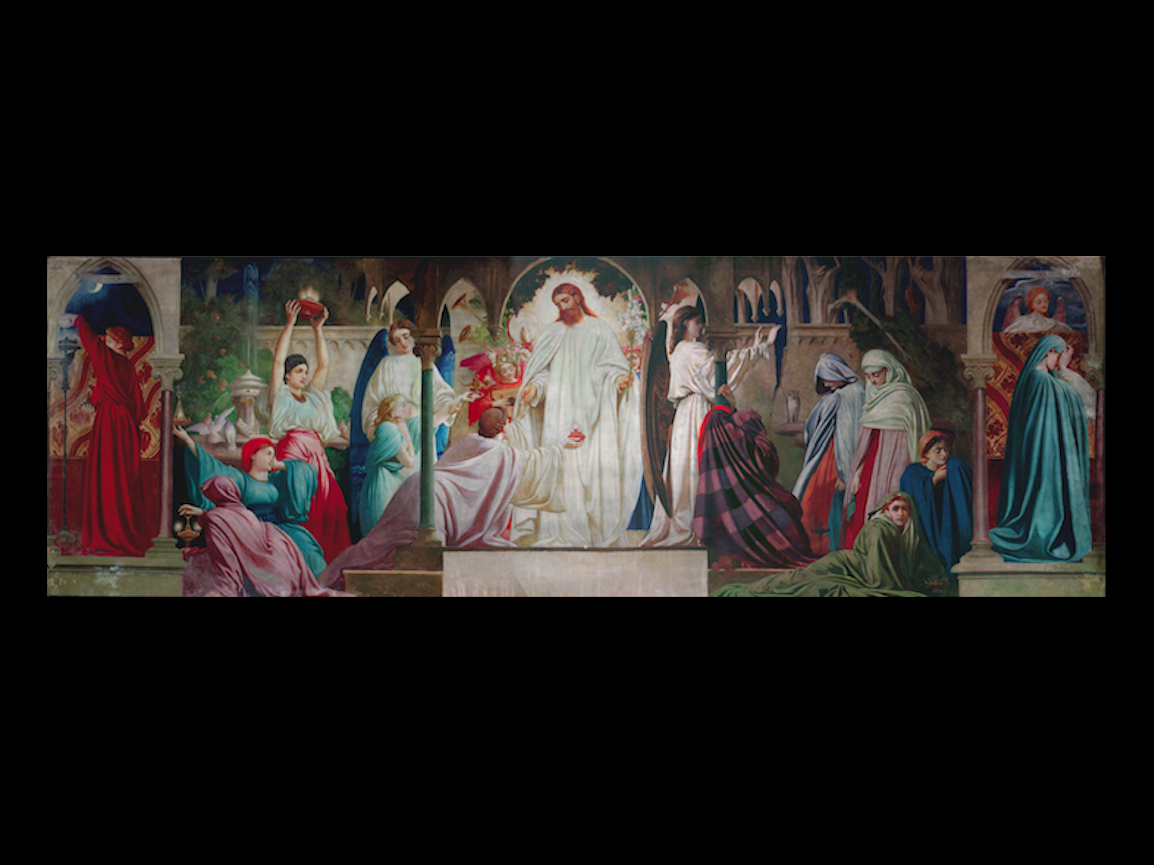The complete history of St Michael’s, our 40 page colour guide
Fresh off the press and only £6. Add our informative windows booklet (£6) and buy both for £10. Available at the church or from the office – email benefice@newforestparishes.com
A Brief History
St. Michael and All Angels Church is a Victorian Gothic Church, located within the Lyndhurst Conservation Area and in the New Forest National Park. It has a very rich history tracing its origins back to 1285 when Queen Eleanor (of Castille), wife of Edward I, made an offering ‘at Lyndhurst in the King’s Chapel there’.
In 1741 a Georgian church was built but, in the nineteenth century, this was deemed too small to serve the needs of the growing population and was replaced by the current church, designed by William White and constructed around 1860. The rector of the time, the Reverend John Compton, aimed for ‘a very handsome church with a beautiful spire and a complete set of bells’. The average Victorian church at the time cost £3,000, St Michael’s a massive £9,000! Money was donated by local people. Lyndhurst is in a royal manor so Queen Victoria gave £300.
As well as being a treasure house of pre-Raphaelite art and high Victorian architecture, St. Michael and All Angels church plays a vital role at the heart of Lyndhurst life. As a Grade 1 listed building, it is a tourist attraction for visitors from around the world who come to see the amazing Leighton fresco’.
Our quick guide to St Michael’s Church
click on the image to enlarge
Art
Below the East window is a fine fresco (wall painting, as pictured), The Wise and Foolish Virgins, painted by Frederic Leighton. Leighton was staying with his mother in Lyndhurst while the church was being built. He was desperate to try a new method of painting frescos, mixing paint and turpentine with the plaster, invented by his friend Thomas Gambier Parry. He volunteered to paint the fresco for the cost of the paint. The bishop had to be persuaded this was a good idea before giving permission even though Leighton had just sold a picture to Queen Victoria for a record 600 guineas. The painting ended up cost the village just £27!
Stained Glass Windows
The earliest is the East window, The New Jerusalem (1862), above the altar. This fine window tells us to pray and prepare in this life for the New Jerusalem, in heaven. This window and the South Transept Answers to Prayer (1863) showing how the prayers of Joshua, Elijah, Stephen and Peter were answered by God, are among the earliest designed by the well-known Pre-Raphaelites William Morris and his friends Edward Burne Jones, Philip Webb and Dante Gabriel Rossetti. Leighton had recommended the young Morris for the new windows even though many had criticised his work in the 1861 Great Exhibition.
Alice in Wonderland
Alice Hargreaves (née Liddell) was the inspiration for Lewis Carroll’s ‘Alice.’ She lived in Lyndhurst for fifty years and worshipped here. Memorials to her sons can still be seen near the Tower room. Her parents-in-law have a memorial to the left of the altar and her simple, as she requested, grave is outside, south of the church.
Digging the Past
In 2011 an excavation of the mound on which the church stands was carried out to allow a new driveway to be built to the church. It involved the removal of a 5ft (1.5m) deep and 16ft (5m) wide section of earth.
The dig unearthed clues about religious activity in medieval times and rare physical evidence of a 12th Century settlement in the town. The investigation also dismissed a long-held local belief that the distinctive mound on which the church stands was man-made.
Nearly a quarter of the finds at the church have been described as medieval.








